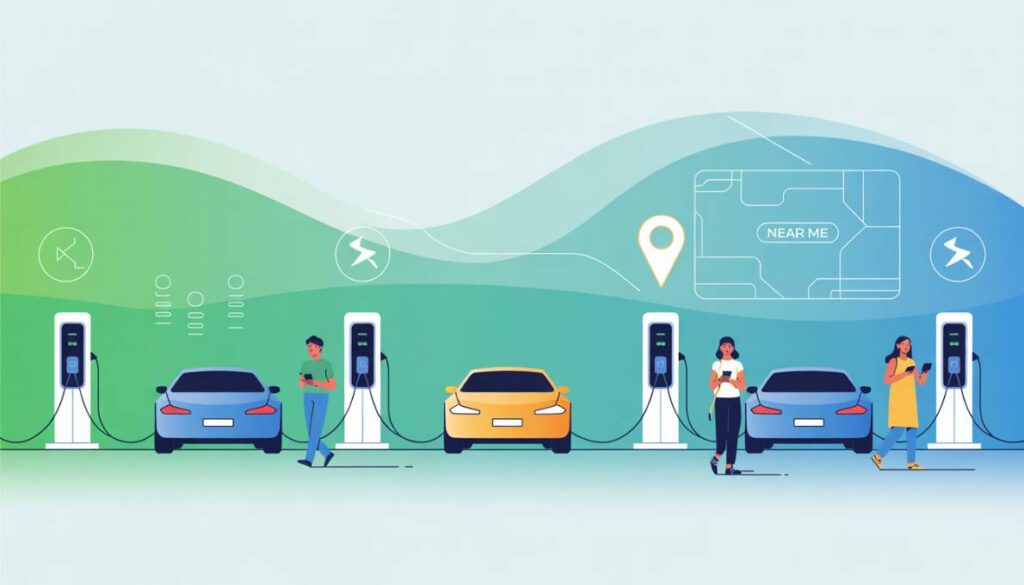Searching for “electric car charging stations near me” is no longer a casual tap on a smartphone; it is the first step in assessing a rapidly expanding service sector. Whether you aim to franchise a network, retrofit an existing forecourt, or simply scope the marketplace, the nuts and bolts of a successful site come down to features that entice drivers to plug-in, pay, and return. Below you will find a focused guide to the core elements that define profitable, user-friendly charging hubs, underpinned solely by the latest observations on how stations are built and operated today.
Payment flexibility is the first competitive edge
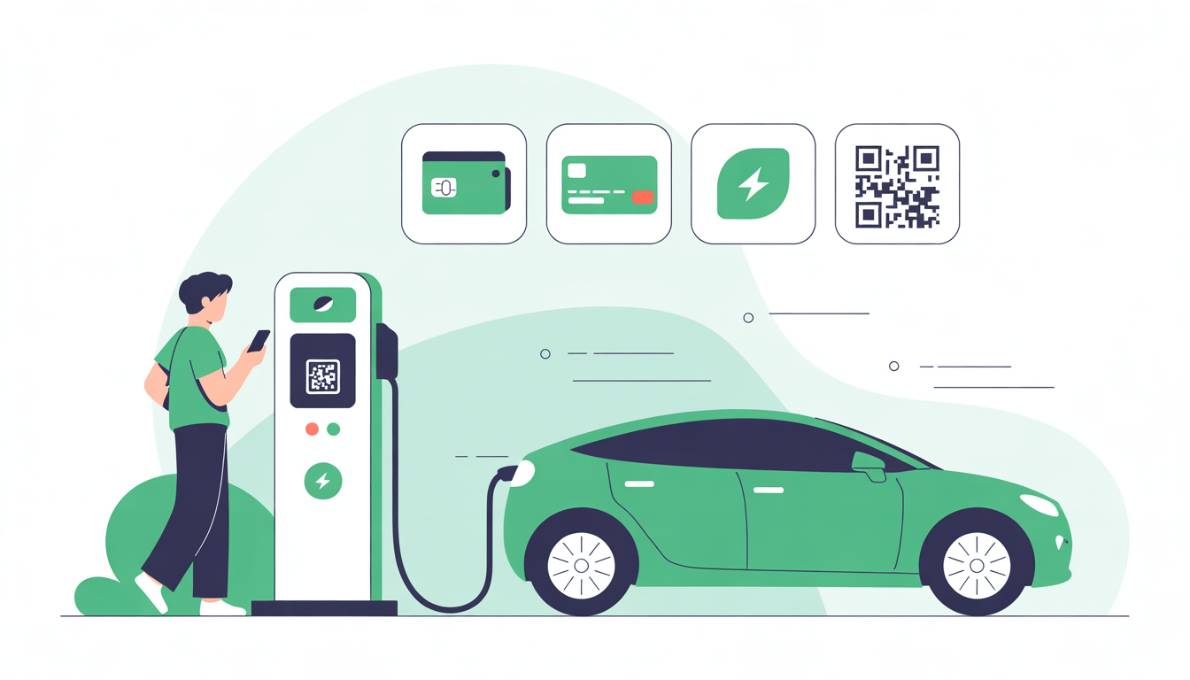
When motorists type “electric car charging stations near me” they expect payment to be as effortless as topping up a traditional tank. Forward-thinking operators therefore provide four clear options:
- Cash – Still essential in many regions, cash caters for drivers who prefer or rely on physical currency.
- Credit or debit card – Card readers at the pedestal or inside an adjoining kiosk allow quick tap-and-go transactions.
- Online payment – App-based or web-based gateways let users start, stop, and monitor a session from their phone.
- Mixed models – A blend of all three ensures no customer is turned away.
Each method removes friction, builds trust, and signals professionalism. You do not want frustrated drivers leaving negative reviews because an unfamiliar station demanded a mode of payment they did not carry. By offering variety, you capture every passer-by who searches “electric car charging stations near me” and decides in the moment where to plug in.
Amenities that transform waiting time into dwell time
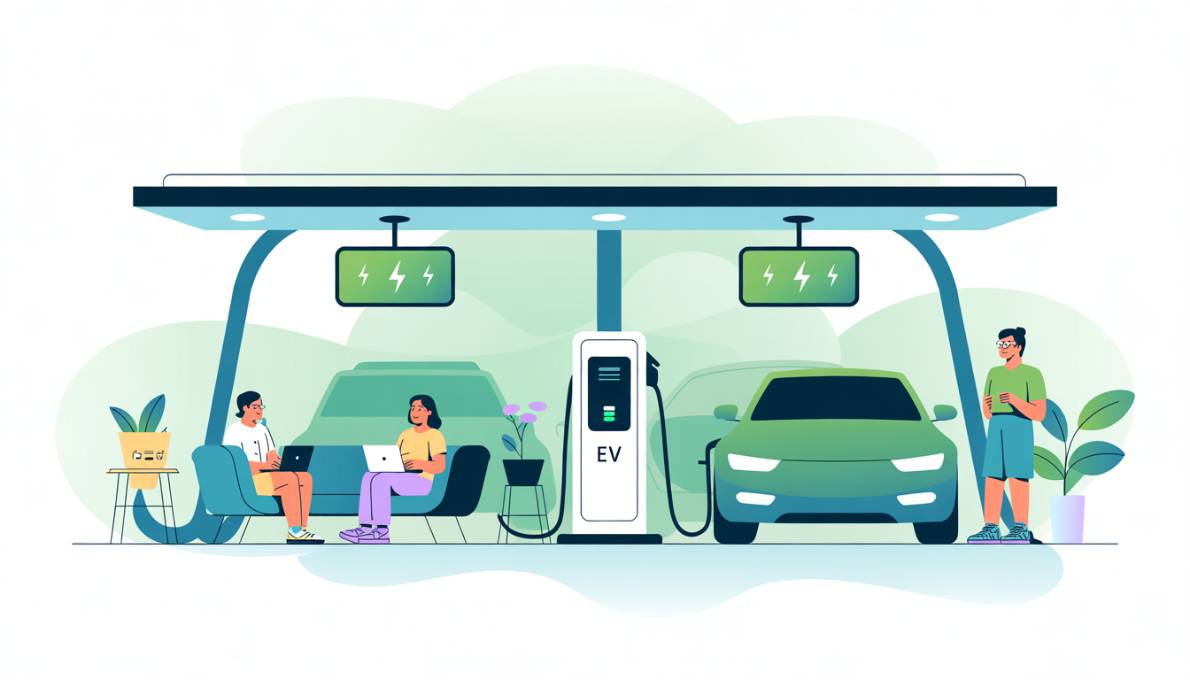
A slow or moderate charge can last longer than a coffee break. Stations that complement plug-in time with amenities convert idle minutes into an enjoyable pause—and a new revenue stream. Industry observation highlights a few winning extras:
- Dedicated EV bays with clear signage and generous spacing avoid door dings and extension-lead tangles.
- Restrooms kept bright and clean reassure travellers and families.
- Light food, vending machines, or a micro-café encourage impulse purchases.
- Reliable Wi-Fi means remote workers can answer emails while their car recharges.
When people reach for their device and search “electric car charging stations near me”, a description that mentions such conveniences immediately stands out. Some operators, including innovators like Thunderplus, report higher session turnover simply by adding comfortable seating and consistent connectivity.
Operating hours and physical accessibility set expectations
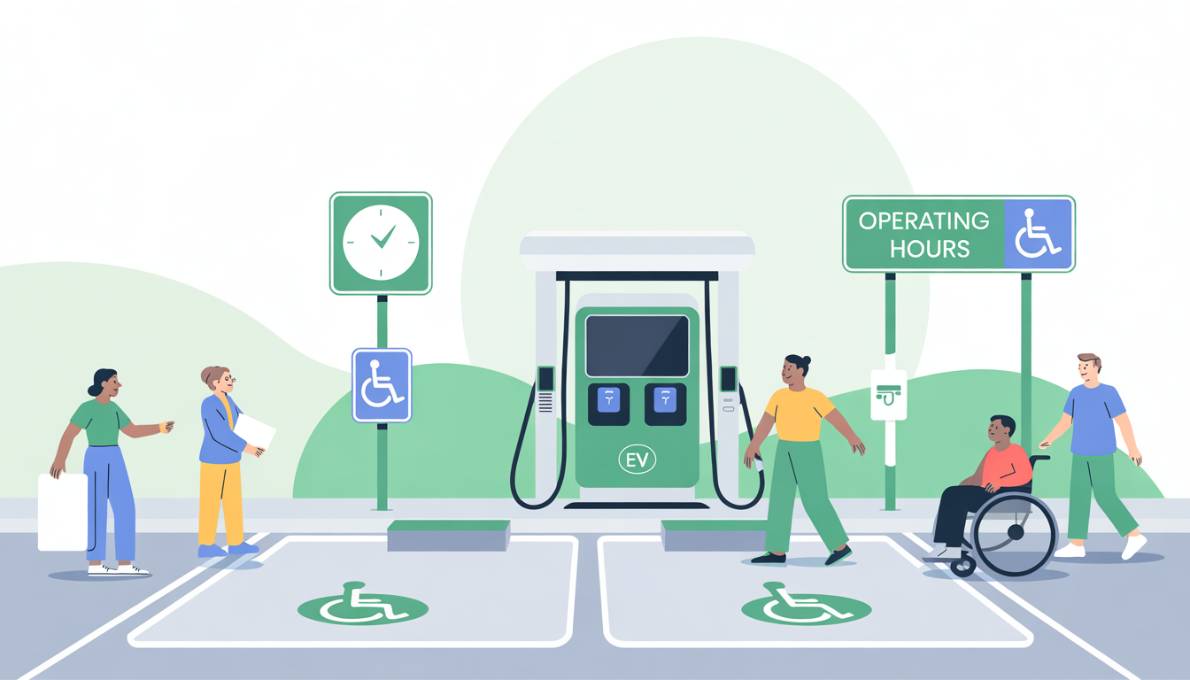
Your customers may arrive at dawn, during a lunch rush, or after a late-night concert. Hence many successful sites stay open 24/7. Where zoning or staffing makes around-the-clock service impossible, clearly posted hours prevent wasted journeys. Another key component is accessibility:
- Wide lanes and kerb-free approaches help all drivers manoeuvre easily.
- Ramps, tactile paving, and accessible payment screens ensure compliance with disability standards.
Nothing deters repeat business faster than arriving to find a shuttered charger or a bay impossible to access. Ensuring visibility of hours and inclusive design directly influences the customer’s next “electric car charging stations near me” decision.
Common pitfalls to avoid before opening the doors
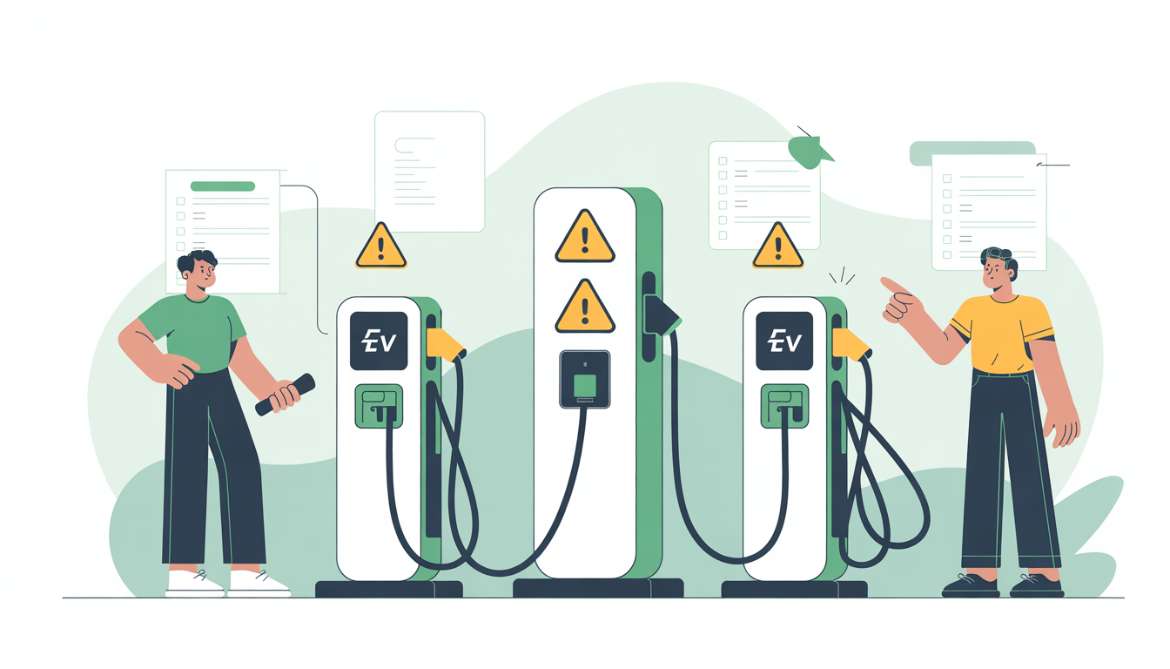
Even well-financed entrepreneurs fall into predictable traps. The following missteps repeatedly surface in user feedback and should be front of mind:
- Ignoring compatibility – Not all vehicles accept all plugs or power ratings. Double-check connector formats and on-board charger limits before final purchase orders.
- Misjudging charging speed – Level 1, Level 2, and DC fast charging each serve different use-cases. Under-powered stations frustrate drivers who expected a 30-minute top-up.
- Overlooking payment visibility – Hiding fees behind an app download breeds mistrust. Provide price clarity upfront via on-screen prompts or signage.
- Forgetting to verify hours online – If your station closes at midnight, be sure mapping services reflect this. Otherwise drivers filter for “electric car charging stations near me open now” and miss you entirely.
Shielding your venture from these errors positions you as the reliable answer whenever a motorist, delivery fleet, or ride-share operator pings their phone for a charge.
A straightforward step-by-step user journey
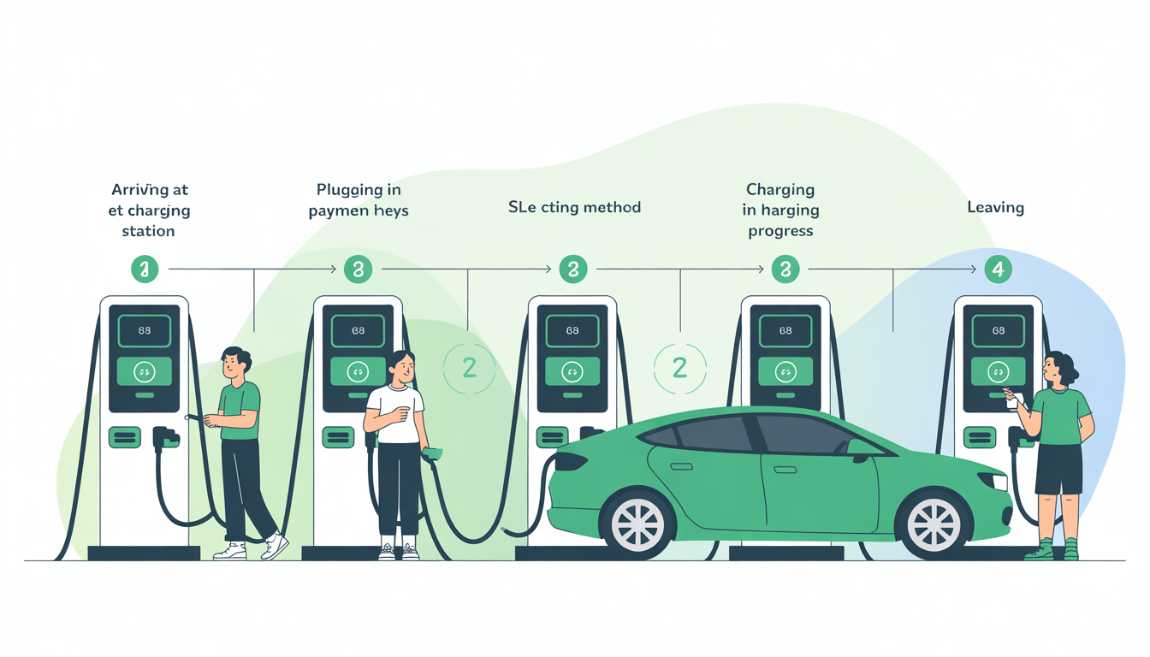
From the driver’s point of view, a charging session follows an easily replicable five-step process. Mastering and advertising this simplicity helps demystify electric motoring—and keeps cars cycling through bays efficiently.
Step 1 – Discover the site
Drivers use a mobile app or their in-car GPS to locate “electric car charging stations near me.” Listings with up-to-date photos and real-time availability attract immediate clicks.
Step 2 – Confirm compatibility
Before pulling in, users glance at connector types and power levels. Providing this information within the map entry short-circuits guesswork.
Step 3 – Park and plug-in
Clear ground markings guide drivers into a designated EV spot. Cables should reach both front- and rear-mounted ports without strain.
Step 4 – Select payment and initiate
The on-screen menu or app prompts the customer to choose cash, card, or online payment, then taps a button to start the charge.
Step 5 – Monitor, finish, and depart
A countdown or percentage read-out lets the driver plan their next move. When finished, they simply end the session and free up the bay.
By reinforcing this five-step narrative in your marketing blurbs and on-site signage, you turn first-time visitors into confident regulars who automatically search “electric car charging stations near me” every time they pass through.
Growing availability signals ripe opportunity
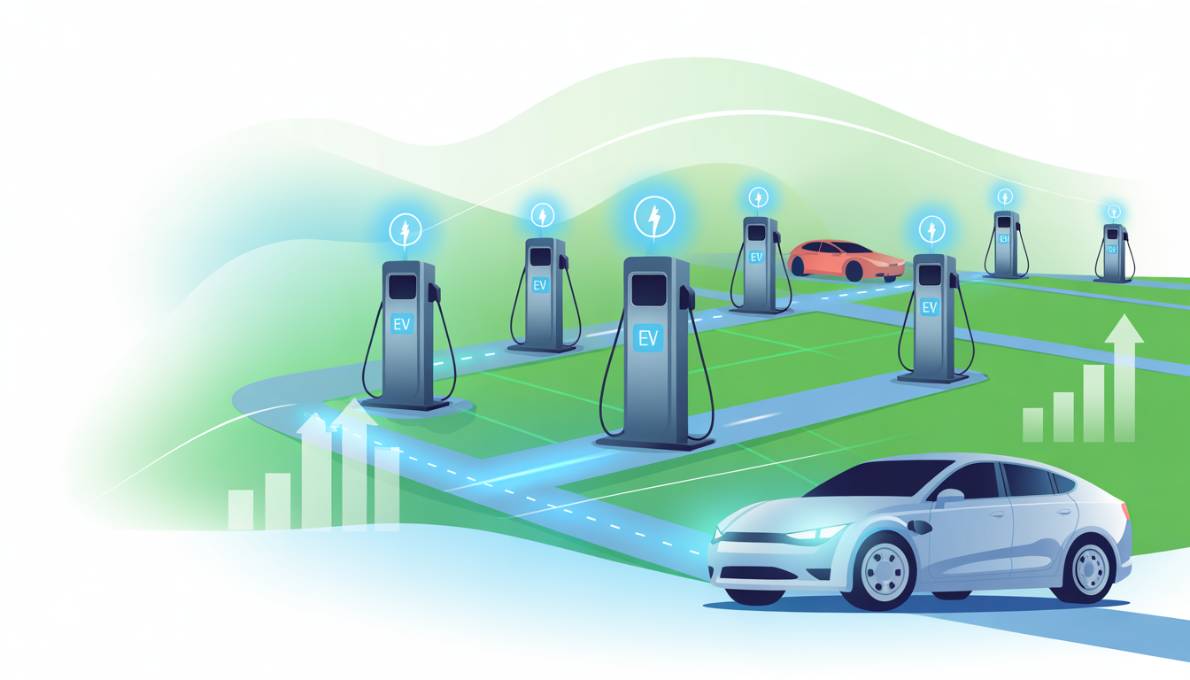
Industry reports note year-on-year growth in public chargers, reflecting the surging adoption of battery-powered vehicles. More locations now bundle a mix of Level 1, Level 2, and DC fast charging to lure commuters, tourists, and commercial fleets. For entrepreneurs, this trend translates into:
- Higher public awareness – The phrase “electric car charging stations near me” is typed, tapped, and voiced millions of times every month.
- Intensifying demand for varied service models – Urban dwellers need overnight or workplace top-ups, while motorways favour rapid DC units.
- Room for differentiation – Operators who focus on payment flexibility, amenities, and round-the-clock service still enjoy clear competitive space.
In other words, supply is climbing but so is demand. Position your station with the customer-centric features outlined above and you can capitalise on this momentum ahead of slower-moving rivals.
Looking for reliable electric car charging stations near you? Explore ThunderPlus’s extensive network across India and discover how our state-of-the-art charging solutions can power your journey—visit us at thunderplus.io for more information!
Frequently Asked Questions
Q1. Are electric car charging stations free?
Many stations charge a fee, though some retailers or councils subsidise electricity to attract footfall. Always check the listing details before arrival.
Q2. How much does it cost at an electric car charging station?
Costs vary by power level and operator, typically ranging from a modest per-kWh tariff to a flat session fee. Transparent pricing on-screen or in the app prevents surprises.
Q3. What is electric car charging stations near me open now?
When you apply the “open now” filter in mapping apps, you see only those chargers whose operating hours coincide with your search time, ensuring you do not arrive at a closed facility.
Q4. What payment method should I prioritise when launching a new station?
Provide at least card and online options from day one. Cash remains useful in certain areas, but digital methods guarantee speed and traceability.
Q5. How do amenities influence customer retention?
Facilities such as restrooms, Wi-Fi, and snacks turn waiting time into productive or relaxing dwell time, raising the likelihood of repeat visits and ancillary purchases.
Q6. My station shows compatible plugs yet some drivers still report issues. What advanced troubleshooting can I do?
Verify that each connector is delivering its rated power, update firmware regularly, and keep clear maintenance logs. Posting real-time status in your app also helps drivers diagnose compatibility on the spot.


